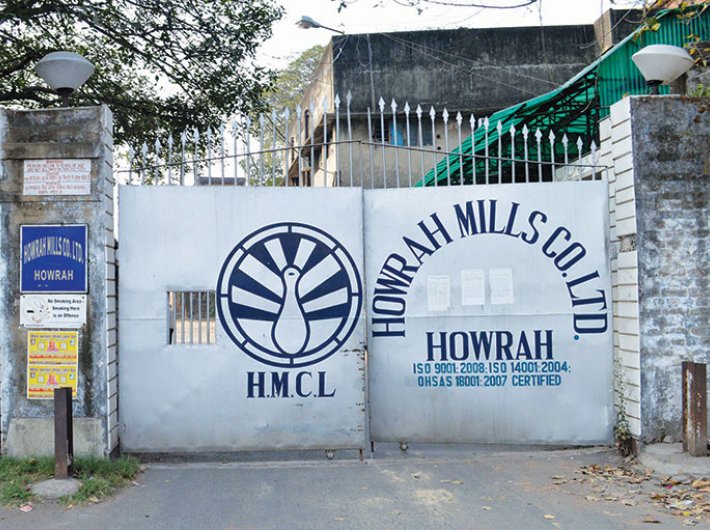Bad crop and ban by Bangladesh on export of raw jute are hurting both the farmers and the industry, impacting over 43 lakh people in the state
The clock has just struck 6 pm. The blazing sun has already disappeared behind the mango groves and thick clouds envelop the sky. The call for azaan from a nearby mosque shatters the silence of the area. But Roshan Ali does not notice the call.
For the past two hours, the middle-aged farmer has been sitting quietly in his barren field at Kadambagachi off North 24 Parganas, around 30 km from Kolkata. Ali is gripped by thoughts that keep rising like waves in his mind and die down, leaving him more tense and desperate than before.
Ali had cultivated jute last year but suffered losses due to the unseasonal showers that destroyed the crops. Worse, he failed to repay the loan taken from a private moneylender who is pressurising him to clear the debt along with interest or face the consequences.
He wants to invest in farming again but shudders to think that the loss this year can reduce him to begging.
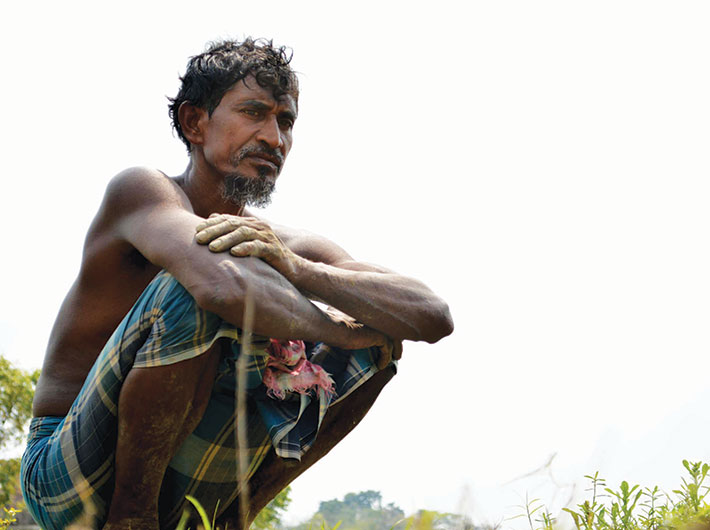
His chain of thoughts is broken when I approach him to ask if he plans to grow jute this year. Perturbed by an unwanted interruption, Ali at first refuses to speak. “Why should I open my wounds every time you people come? It pains me to recount my miseries. I suffered losses of around two lakh rupees last year. The moneylenders are already banging on my door. My children do not go to school because I have not been able to pay their tuition fee. Nobody understands my plight,” he says as his voice chokes with emotion.
Sahid Sardar, a 60-year-old farmer sitting beside him, adds that the losses virtually broke their back, forcing them to make a distress sale of the pat (raw jute) to clear the dues of the banks and moneylenders. “We were expecting a good harvest but everything was lost to the nature’s fury. We had taken huge loans for farming, but the losses left us with no alternative but to sell the produce as fast as possible to repay our debts,” he says while wiping off sweat from his face with a gamchha (towel).
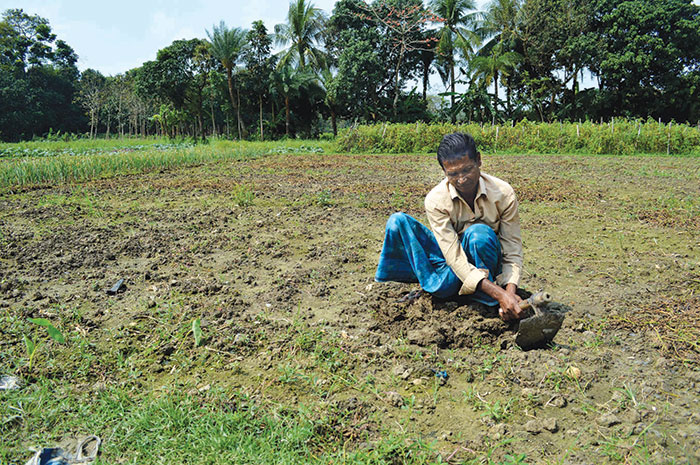
Sahid fears that the days are not far when the debt-ridden farmers might be left with no other option than to end their lives, like their counterparts in Maharashtra and other states.
The condition is depressing even though the state still continues to meet around 75 percent of the jute requirement of the country with around 5,19,000 hectares of land under cultivation. The annual turnover of the industry is around Rs 10,000 crore. Districts like Nadia, North 24 Paragans, Murshidabad, West Dinajpur, Cooch Behar, Jalpaiguri, Hooghly and Malda account for 71 percent of the area under jute cultivation in the country.
The poor crop hit the production of raw jute last year that stood at around 60,000-65,000 lakh bales (1 bale=180 kg) against the requirement of 90,000 lakh bales for the jute mills in the state.
The situation exacerbated when Bangladesh banned the export of raw jute to India and other countries on November 1, 2015 to increase supply of the fibre for local jute bag and sack-makers.
“The neighbouring country supplied around 9 lakh jute bales annually to mills, mostly in Bengal, that helped to bridge the gap between demand and supply, but the sudden stoppage has hit the industry hard [as it is] already reeling under severe crisis of the raw material,” points out Navratan Sethia, a committee member of the local jute balers association.
As the demand surged, the crop loss paid rich dividends to hoarders who had bought the raw jute in advance from the farmers at throwaway rates and in some cases even lower than the minimum support price (MSP) of Rs 2,700 fixed by the Jute Commission of India (JCI) under the textiles ministry.
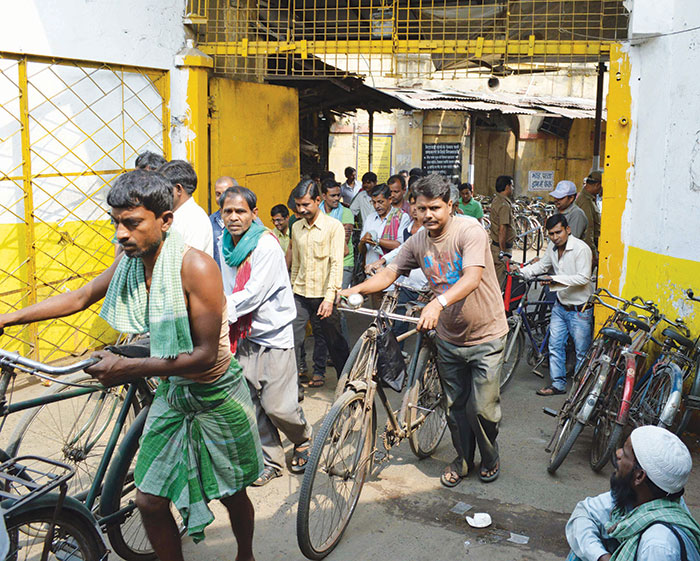
When I visited some of the raw jute markets in North 24 Parganas and Hooghly, several traders admitted on condition of anonymity that hoarding raw jute was a profitable venture. One of the traders disclosed that he had bought raw jute at a rate of around Rs 2,500 per quintal from a farmer but sold it to the mills at almost double the price.
Seeing the raging prices of raw jute, the JCI finally intervened and passed an order on November 24, 2015 to crack down on hoarders. The order made it mandatory for the jute mills to maintain raw jute stock of only eight weeks or less in their godowns and stop fresh purchase of raw jute.
The JCI also recommended one to seven years of imprisonment for jute mill owners violating the Jute Control Order and the Essential Commodities Act. In fact, on March 8, the Jute Commission issued a revised notification restricting the jute mills to store four weeks of raw material instead of eight weeks. Besides, the traders have been allowed to keep a maximum of 900 quintals of raw jute for its proper assortment.
But the crisis had already played its part with the government diluting jute procurement plan for the Rabi crop season up to March 2016, which benefitted plastics as a packaging material for food items. “The government has already diluted 1.34 lakh bales of the proposed 13.34 lakh bales in December 2015-April 2016 period,” says jute commissioner Subrata Gupta. This means that the government procurement agencies can use alternative packaging material like polymer bags.
On January 21, the centre decided to reduce the purchase of jute packaging material by 2.03 lakh bales for the April-June 2016 season citing shortage of bags. On February 24, the union government, with an aim to boost the morale of the farmers raised the MSP for raw jute by 18.5 percent to Rs 3,200 per quintal for 2016-17, up from Rs 2,700 in the previous year.
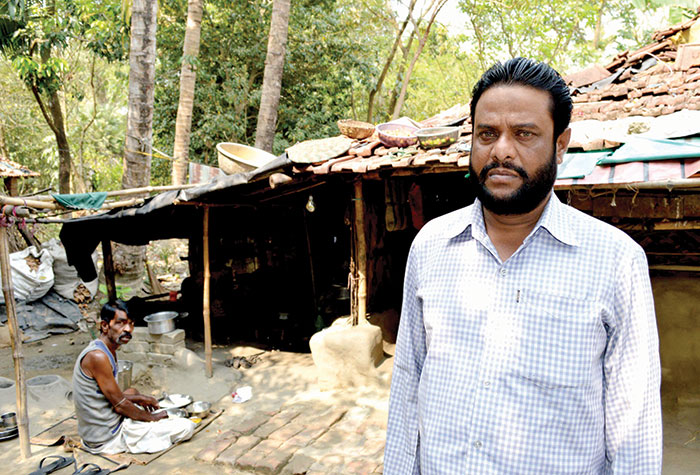
All is not well
Those connected with the industry say that the hike in MSP would hardly be of any benefit to the farmers. “They remain debt-ridden most of the time and try to sell the product as early as possible to repay their loans. The hoarders might try to play a dirty game by offering a slightly higher price to farmers than MSP to buy their produce. The real beneficiaries would be the hoarders and not the growers,” says Md Mohsin Islam, the secretary of North 24 Parganas Jute association.
The sowing for this season already started in March, but farmers are worried about their fate. They fear that they might run into greater debts if the yield fails to bring the desired income. The thought of moneylenders and banks coercing them to return money also haunts them. The lack of farmers’ interest in jute is also reflected across the country. It can be gauged from the reduction of the percentage of total land under jute cultivation that has gone down from 8.72 lakh hectares of cultivable land in 2012-13 to 7.46 lakh hectares in 2015-16.
Jute cultivation being highly labour intensive is another reason that may deter the farmers from growing jute. “The workers don’t come cheap these days because they’re paid well under the several schemes run by the government. The labourers demand exorbitant wages for working in the fields which makes it difficult for us to hire them,” points out Ali who has turned friendly by now.
Mohsin fears that if the farmers decide against growing jute, it could adversely affect the ailing jute mills, which are now facing the toughest time in their history. The state has 59 jute mills of which 12 have remained closed for the past few years, rendering over 70,000 workers jobless.
Several industry observers apprehend that more mills might close down after the April-May assembly polls. “The jute mills are running in losses due to severe shortage of raw material but are not allowed to shut because of tremendous pressure from the government. [As assembly elections are already on,] the closure of mills might affect the electoral prospects of the government which wants to project itself as pro-industry. Besides, suspension of work will also result in the loss of livelihood of several hundred workers that could have an impact on the vote bank of the government,” says Naba Dutta, secretary of Nagrik Mancha, a Kolkata-based non-profit that has extensively documented the jute sector.
Dutta anticipates that a poor crop this year might prove to be a final nail in the coffin for the ailing mills. “The prices of raw jute are already high and may increase further if the shortage persists. Jute mills which do not have enough money to buy the raw jute will certainly close down, which would again render hundreds of workers jobless. The state government has made lofty promises but has done nothing to bail out the ailing industry which is virtually on a ventilator. The government has always viewed the crisis in the jute industry as a law and order problem without going deeper into it.”
What has brought misfortune to the industry that had once seen remarkable growth and was able to meet the world demand?
The what factor
The industry was doing well after independence, before the decline began with the growing popularity of plastic in the mid-1960s. Between 1967 and 1969, with the steady rise of Naxalism, labour unrest in West Bengal had reached its peak. It led to the rise in the wages of the workers who were employed permanently, but this did not improve the condition of the daily employees. The industry remained sick and by 1977, when the Left Front came to power, it was acknowledged that the industry had little capacity to generate new demands or rescue its workforce from impoverishment. The situation has remained unchanged even after the Left Front lost and the Trinamool Congress came to power.
The history of jute mills in Bengal though has been soaked in violence which includes labour unrest and even the brutal murders of officials.
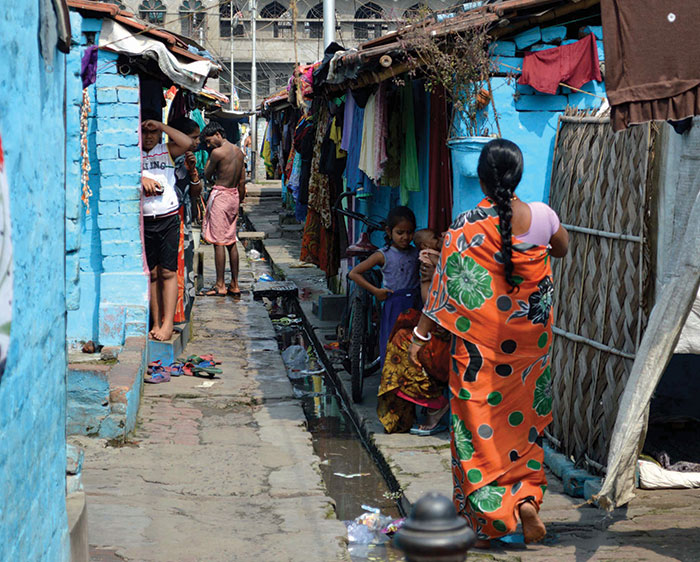
Hari Krishna Maheshwari, CEO of the Northbrook Jute Mill in Hooghly’s Bhadreshwar, was beaten to death on June 15, 2014, by factory workers demanding an increase in weekly working hours that would have got them more pay. Within six days of the murder, three mills had issued suspension-of-work notices, leaving more than 8,000 workers jobless.
In 2011, Firoz Akhtar, the assistant labour welfare officer of Gondalpara jute mill in Chandannagar, about 45 km from Kolkata, was shot at and stabbed to death on the factory premises by unknown assailants. Nine years before that, Subrata Chakraborty, the labour officer of
Hastings Jute Mill in Rishra, was bludgeoned to death allegedly by factory workers.
At present, there are four million jute growers and about 3,00,000 workmen engaged in the jute sector. If their families are factored in, approximately one-third of West Bengal’s total population of about 90 million are directly or indirectly linked to jute.
To overcome the crisis triggered by the shutdown of jute mills, the Indian Jute Mills Association (IJMA) last year urged chief minister Mamata Banerjee to announce a jute policy to help revive demand for jute bags.
With the mandatory requirement for packaging of sugar in jute bags falling to 20 percent since 2013-14, as opposed to 100 percent stipulated originally in the Jute Packaging Materials Act (JPMA) of 1987, half the jute mills have been facing demand crisis for the past three years.
“The industry can survive if the state government announces a policy to include packaging of potatoes and rice in jute bags. We have already written to the chief minister but are yet to receive a reply,” says IJMA chairman Manish Poddar.
He hopes that mandatory packaging of potatoes grown in West Bengal in jute bags would create a demand of 50,000 tonnes annually for the bags.
The present turmoil makes it difficult to believe that the state was chosen by George Acland to set up the first jute mill of the country way back in 1855. He brought jute spinning machinery from Dundee in Scotland and started the mill at Rishra in Hoogly district, around 13 km from Kolkata. The jute growing areas were mainly in Bengal and there was an abundant supply of labour, ample coal for power and river connectivity.
The ailing and closed mills have already taken a toll on the retirement benefits of the jute workers. An estimated Rs 300 crore worth of gratuity of over 50,000 retired workers is pending with the mill owners for several years.
Many workers died while running from pillar to post for their hard-earned income and those who survive rue that they are too poor to fight legal battles with the owners.
Joginder Shaw, who is in his 60s, retired four years ago, but is yet to receive gratuity. He has to do odd jobs for his livelihood. “I gave 40 years of my life to the jute mill, but got nothing in return. They have kept my gratuity citing the financial crisis. I wanted to use the money for the treatment of my wife who suffers from various ailments,” he says in a choked voice.
Dilip Bhattacharya, the state secretary of All India United Trade Union Centre (AIUTUC), points out that several hundred employees have died waiting for the gratuity, but mill owners simply swallowed their money. “The Payment of Gratuity Rules 1972 makes it clear that the gratuity should be paid within 30 days from the date it becomes payable, but the rules are hardly followed except by a few mill owners who pay the dues on time. As the non-payment doesn’t carry harsh punishment, the rules are easily flouted,” he says.
Amitava Chakroborthy, acting secretary of West Bengal Chatkal Mazdoor union, alleges that rules are also ignored while appointing workers. “In 2013, a tripartite agreement was signed between 20 trade unions, labour management (read mill owners) and labourers in which the management agreed to appoint 90 percent permanent labourers in the mill, but the situation is just the reverse with just 20 percent being appointed on permanent basis. The management finds it easy to hire contractual labourers as they have to pay fewer wages and can remove them at their will. A permanent worker gets around Rs 450 while a contractual worker is paid around Rs 300-350 for the same work.”
State labour minister Malay Ghatak tries to downplay the situation and says that he is in talks with the mill owners to find a solution to the issue of gratuity. “We have held discussions with trade unions and jute mills to look for an amicable settlement in the payment of gratuity for the workers. We know that the situation is grave and the government is serious about it. We are looking into the issues of the appointment of workers and their living conditions,” he says.
The workers’ quarters are commonly known as coolie line where they survive in inhuman conditions amid choked drains and heaps of garbage coupled with several hours of power outages. When I visited one of the ‘coolie lines’ at Rishra off Hooghly district the workers practically besieged me to narrate their civic woes. “Nobody has ever come to see the condition in which we live. The mill managers also stay away because they dislike paying visit to the filthy quarters. We survive in the most hellish conditions with no electricity for most part of the day,” says Mahboob Alam, a mill worker.
A few metres away, Shamshad Ali, points towards a gutter that overflows with human waste every few months. “We have only six common toilets for 1,000-odd people living in the coolie line. Outsiders also use them. Most of the time the gutters get filled up and start overflowing. We have no alternative but to cook food and live in the deplorable condition which is even unfit to keep animals. The situation
turns horrible during monsoons when our rooms become inundated with dirty and smelly water. The leaking roofs leave us with no alternative but to sleep on wet beds.”
Akhtar Ali, a contractual labour, says that several hours of power cuts leads to mosquitoes having a field day. “We get only 13 hours of power supply mostly during the night hours. The rooms with tinned roofs turn into a virtual furnace during the day time. Children find it difficult to sleep and often cry. We have to fan them. The menace of mosquitoes makes the place hellish, raising fears of the spread of diseases. The sweepers come rarely to clean and garbage piles up for days. We have complained to the mill managers several times, but they have turned a deaf ear to our plight. We hope that our grievances would be conveyed to the mill owners by you. We just want some basic amenities for our survival. After all, we also have the right to live,” says Shankar Tiwari, an octogenarian with fading eyesight.
feedback@governancenow.com
(The story appears in the May 1-15, 2016 issue)
